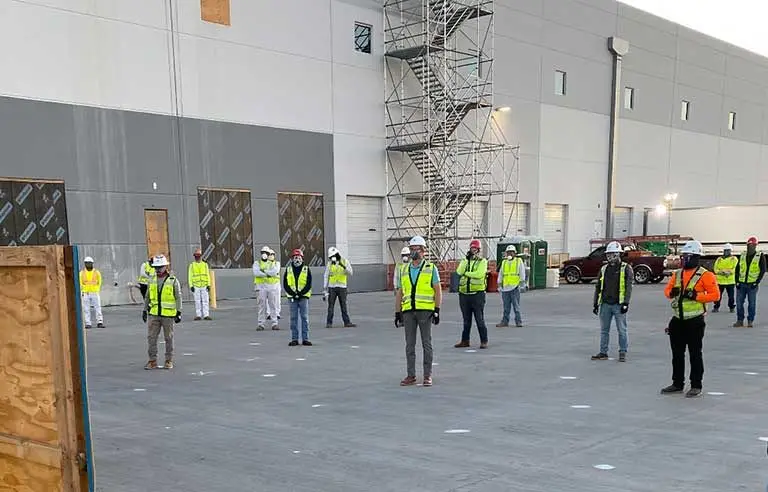The Significant Aspects of Turbidity Monitoring for Dredging Operations Course

The Impact of Construction on the Environment
The construction industry is expanding rapidly, but there is growing concern about its impact on the environment, particularly in the context of Turbidity Monitoring for Dredging. In recent years, sustainable construction methods and practices, including careful monitoring of turbidity during dredging operations, have become essential topics of discussion. These practices are vital for reducing environmental damage and ensuring compliance with federal guidelines.
Environmental Challenges in Government and Military Construction
Government and military construction contracts involve stringent rules and guidelines to maintain the environment during the construction process. Studies show that construction processes contribute to almost 50% landfill waste, 40% water contamination, and 23% air pollution.
Factors Influencing Environmental Impact
Whether private or government contracts, nearly all construction projects impact the environment. The growing weather changes and climate change are directly influenced by:
- Type of construction materials
- Use of natural resources
- Waste management
- Type of land and soil where the construction will take place
Federal Environmental Guidelines
The federal government has devised certain environmental guidelines that construction companies and contractors must follow. The goal of using sustainable methods is to reduce carbon footprints and minimize energy usage.
The Importance of Dredging and Turbidity Monitoring
Dredging is a common process that involves the removal of sediments and debris from lakes, rivers, and seas. This process is important for new construction, maintenance, or expansion of ports, harbors, and shipping channels.
Understanding Turbidity and Its Environmental Impact
Construction projects along lakes, streams, rivers, and coastal locations usually impact local water quality. Turbidity, which measures water clarity, can be affected by suspended elements like sand, silt, and clay, leading to water quality issues and threatening marine life.
Environmental Effects of Increased Turbidity
High levels of turbidity from dredging can result in:
- Increased risk of disease and impact on the growth of fish and other marine animals
- Hindered development of fish eggs and larvae
- Altered natural movement and migration of fish
- Food scarcity for fish, making survival harder
- Increased difficulty in catching fish
Titan University’s Online Courses in Safety, Control, and Environmental Compliance
Titan University offers numerous online Safety, Control, and Environmental courses essential for individuals involved in government construction projects like USACE (US Army Corps of Engineers) and NAVFAC (Naval Facilities Engineering Systems Command).
Turbidity Monitoring for Dredging Operations Course Overview
The Turbidity Monitoring for Dredging Operations Course is valuable for SSHOs (Site Safety and Health Officers) and Quality Control Managers performing environmental base studies. The course consists of 14 modules covering every aspect of dredging and turbidity monitoring.
Course Content and Key Learnings
The first few lessons focus on dredging and its environmental impact, while the latter part emphasizes turbidity tests and monitoring. Enrollees will learn about parameters, equipment, and tools to monitor turbidity, including ‘navigational dredging,’ which increases water channel depth for boats and ships.
Applications of Dredging in Construction Projects
Dredging is a critical step for various construction projects, including:
- Waterway projects involving excavation and construction of bridges, underwater tunnels, piers, and docks
- Land reclamation projects
- Deepening waterways to allow ships and large vessels passage with maximum depth
Turbidity Assessment and Environmental Compliance
The course helps determine turbidity fluctuations, with Quality Control Managers or SSHOs assessing levels before, during, and after construction. The course also includes guidelines from USACE and the EPA (Environmental Protection Agency) to ensure proper dredging methods and minimize environmental impact.
Certification and Course Completion
The online course is ideal for SSHOs, Quality Control Managers, contractors, and workers. Quizzes at the end of each module must be passed, and a final examination with at least 70% marks is required to obtain certification.
Conclusion
Titan University is one of the only recognized institutions offering certifications for Government Construction Projects. This online course will teach you the requirements, expectations, and goals of Turbidity Monitoring during Dredging Operations, aiming to minimize the environmental impact and protect the underwater ecosystem.






I am super interested in this course! I will be joining a new contractor soon that works on dredging projects, and this seems like a great way to be up-to-date on the latest information and seems like I could easily complete it on my own schedule.